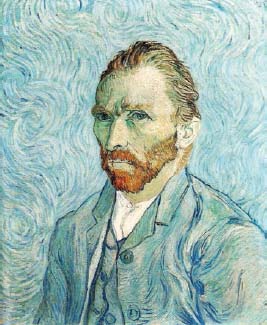From the Industrial Revolution to World War I, C. 1850–1914Post-Impressionism |
Who was Vincent van Gogh? |
During his lifetime, Dutch artist Vincent van Gogh (1853–1890) was not well understood, and he died young, at the age of thirty-seven, of a gunshot wound. Although no gun was ever found, his death has always been considered a suicide. He suffered intense bouts of depression, spent time in an asylum in southern France, and is, of course, famous for cutting off his own ear (though this story has its critics), a violent event that was documented in van Gogh’s Self Portrait with Bandaged Ear (1889).
Although van Gogh’s troubled life receives a great deal of attention, it is his incredible artistic talent that endures. His paintings, such as The Starry Night (1889), Bedroom in Arles (1888), Still Life (Vase with Twelve Sunflowers) (1888), and his many expressive self-portraits are among the most highly sought after works of art in the world. His goal was to create art that would appeal to everyone, not only the rich who could afford fine art. In Paris, he saw the brilliant colors of the Impressionists and was fascinated by Japanese ukiyo-e paintings. Inspired by pointillism, van Gogh experimented with fragmented brushstrokes to create brightness and energy in his work, and he attempted to communicate intensity and emotion through expressive color and forms. His work was highly textured, dynamic, and an important part of the newly developing Expressionist style, a modernist movement that also included Edvard Munch and later included Franz Marc, Wassily Kandinsky, and Ernst Ludwig Kirchner. Van Gogh was active for a mere ten years, and during that time he produced some of the most iconic images in Western art: an empty chair, the lurching room at his home in Arles, the dark undulations of a cypress tree perched along the horizon.

Like Rembrandt, the post-impressionist artist Vincent van Gogh painted many self-portraits, offering viewers a small glimpse of his mysterious and troubled life. Like most of his paintings, van Gogh’s self-portraits rely on bold brushstrokes and bright areas of color.
